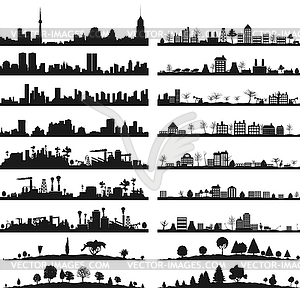The path that I want to discuss for arguing about accessibility at Emory is the route from the Dobbs University Center to the Goizuetta Business School. The specific course is the fastest one which starts from the main entrance of the DUC, passes through the Cox Hall, and ends at the main entrance of the business school up the hill. I specifically chose these two sites because they are one of the main, important buildings at Emory that many people attend in their daily routines. Also, the road overtakes the Cox Hall, the Woodruff library and other frequently used buildings for classes and school activities which makes it a dominant route that people at Emory take to get anywhere.
That being said, as a student at Emory without any disability, I wished to explore how, in fact, accessible the route is. How many people that I do not usually recognize struggle to get through the campus using it everyday? After closely investigating the path, I realized that it is predominantly inaccessible. The distinct fact that the road is available for both people and cars all throughout the journey makes it especially difficult for people with wheelchairs, blindness, or hearing impairment to cross or get through.
That being said, as a student at Emory without any disability, I wished to explore how, in fact, accessible the route is. How many people that I do not usually recognize struggle to get through the campus using it everyday? After closely investigating the path, I realized that it is predominantly inaccessible. The distinct fact that the road is available for both people and cars all throughout the journey makes it especially difficult for people with wheelchairs, blindness, or hearing impairment to cross or get through.
The route looks like this. The main components include continuous brick-way as sidewalks, cemented road for cars or any other mobile transportations, and a steep hill right before the business school. The brick-way is very narrow and uneven so people always bump into each other while passing through. Also, the sidewalk is higher than the main cement road, so it is easy to fall back to the main road when the traveler is not paying attention or bumping into too many people. This can be very disadvantageous for people with visual impairment because since it’s the main passage, crowds of people pass through the same sidewalk, and those who cannot see can certainly trip on the edge of it and get hurt.
Adding on, although the driveway is majorly utilized for walking path, cars, bikes, buses, and trucks still drive by every once in a while which makes everyone dangerous to cross or move altogether. In order to cross the road to the other side, speed is pivotal. However, for people with wheelchair or mobility impairment, it is particularly more unsafe and hazardous because they cannot move as fast. The integration of the sidewalk and driveway as one passage for both transportations and people greatly brings the risk of accidents higher.
Adding on, although the driveway is majorly utilized for walking path, cars, bikes, buses, and trucks still drive by every once in a while which makes everyone dangerous to cross or move altogether. In order to cross the road to the other side, speed is pivotal. However, for people with wheelchair or mobility impairment, it is particularly more unsafe and hazardous because they cannot move as fast. The integration of the sidewalk and driveway as one passage for both transportations and people greatly brings the risk of accidents higher.
Re-designing would be significantly helpful for the route from the DUC to the Business School. There are several necessary steps that need to be touched:
- Make the sidewalk wider. This is definitely needed for people to stop bumping into each other as much and to provide space for people with wheelchair or the vision-stick for people with visual impairment to proceed without difficulty.
- Smooth out the sidewalk with thorough cement. The sidewalk is too bumpy and rough for wheelchairs to slide through.
- Make appropriate crossroads. By having one at a certain spot every time, passengers and drivers can actually communicate and make the cross easier for everyone. Also, in this way, a clear rule is set that both of them cannot disturb each other’s sides.
The discussion of the specific route at Emory exploits Cosgrove’s ideas about landscape. According to Cosgrove in his document ‘Geography is Everywhere: Culture and Symbolism in Human Landscapes,’ landscape is a “way of seeing” and “harmonising the external world into a visual unity” along with “human intervention as a relationship that harmonises human life with the inherent order or pattern of nature itself.” The route from the DUC to Goizuetta building is a visual, natural value of Emory. When human life is connected and introduced to this aspect, a relationship is formed between people and inherent pattern of nature. The invaluable landscape of the route is bound to be interrupted - positively, indeed - as human live by as a part of it. In this respect, no matter how beautiful, balanced, and cooperated the view or the path looks, the union between human life, which encompasses disability, and nature can always create inaccessibility. How many of theses instances would be there in the world today? That is why it is important to think about the true accessibility of the sites we pass everyday.



 RSS Feed
RSS Feed